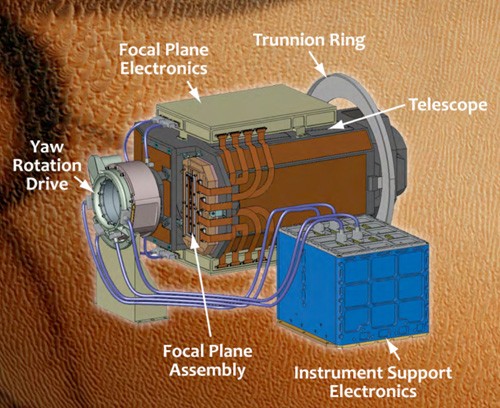The ExoMars Trace Gas Orbiter, scheduled to launch in 2016, will be the first cooperative venture between NASA and the European Space Agency to explore the atmosphere of the Red Planet.
The UA’s Lunar and Planetary Laboratory was recently awarded a $30 million contract by NASA to build the orbiter’s state-of-the-art imaging device. A stereo camera called the High Resolution Stereo Color Imager, or HiSCI, will help the international team locate and map the source of trace gasses present in the Martian atmosphere.
“”The most important trace gas present in the Martian atmosphere is methane,”” said Shane Byrne, assistant professor at the Lunar and Planetary Laboratory and deputy principal investigator on the HiSCI project.
“”We have had some detections of methane over the last few years but the instruments we were looking with weren’t trying to detect that. Now we are going to go back and find out where all this methane is coming from.””
Alfred McEwen, a professor of planetary science at the UA who leads the HiSCI project, said the methane present in Mars’ atmosphere could be coming from volcanic activity or possibly even from life on the surface of Mars.
“”There are a lot of (hypotheses) out there. We really don’t know, it is a first-order mystery,”” McEwen said. “”One possibility is that it is related to life on Mars.””
In many ways, the UA team will be following up on the work of HiSCI’s predecessor, the High Resolution Imaging Science Experiment, or HiRISE, that is currently orbiting Mars.
“”We have this interesting observation that methane is there, but this trace gas orbiter should really help us figure out a lot more about how much methane there is, what particular parts of the planet it is coming from, and that is where the camera will become particularly useful,”” Byrne said.
HiSCI will have the capability to document the surface of Mars with greater clarity, due to its ability to process color up to five times more efficiently than HiRISE as well as its ability to produce three-dimensional images.
“”We will take a picture of a target as we are approaching it and then as we are receding from the target we look back and take another picture,”” Byrne said. “”So those two pictures taken from different angles, just like your eyes, will get a three-dimensional perspective and you can figure out what the shape of the surface is.””
NASA and the ESA will split the costs of the mission in order to reduce overhead costs and streamline their research efforts.
“”ESA is now in partnership with NASA with future Mars missions. This is the first joint missions where ESA is building the spacecraft, NASA is launching it, and it is using a combination of European and U.S. scientists to build the instruments,”” McEwen said.
Byrne said the HiSCI camera will start to collect data in 2017 and continue to document the source of trace gasses for two Earth years. However, the HiSCI camera will almost certainly remain in action for many years after the official mission is completed, he added.
“”It’s never the end, but it really depends on what we find there,”” Byrne said.
“”We have this very tantalizing initial observation of methane and the really nice thing would be, with this mission, to find out the details of where it is coming from and then in some future mission go there to the surface with a Lander.””
Byrne added that one of the greatest advantages in studying interactions between the atmosphere and surface of Mars will be our ability to apply the research to the study of our own planet.
“”On the Earth, everything is so complicated because of vegetation, oceans and life. On Mars you have this elegantly simple case where you have no oceans and no people and there is no vegetation,”” Byrne said.
“”If we can understand how the climate and surface of Mars interact, then we can better understand our environment on Earth as well.””









